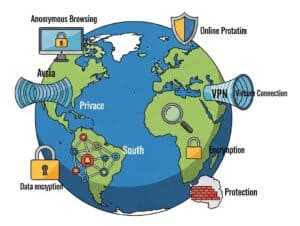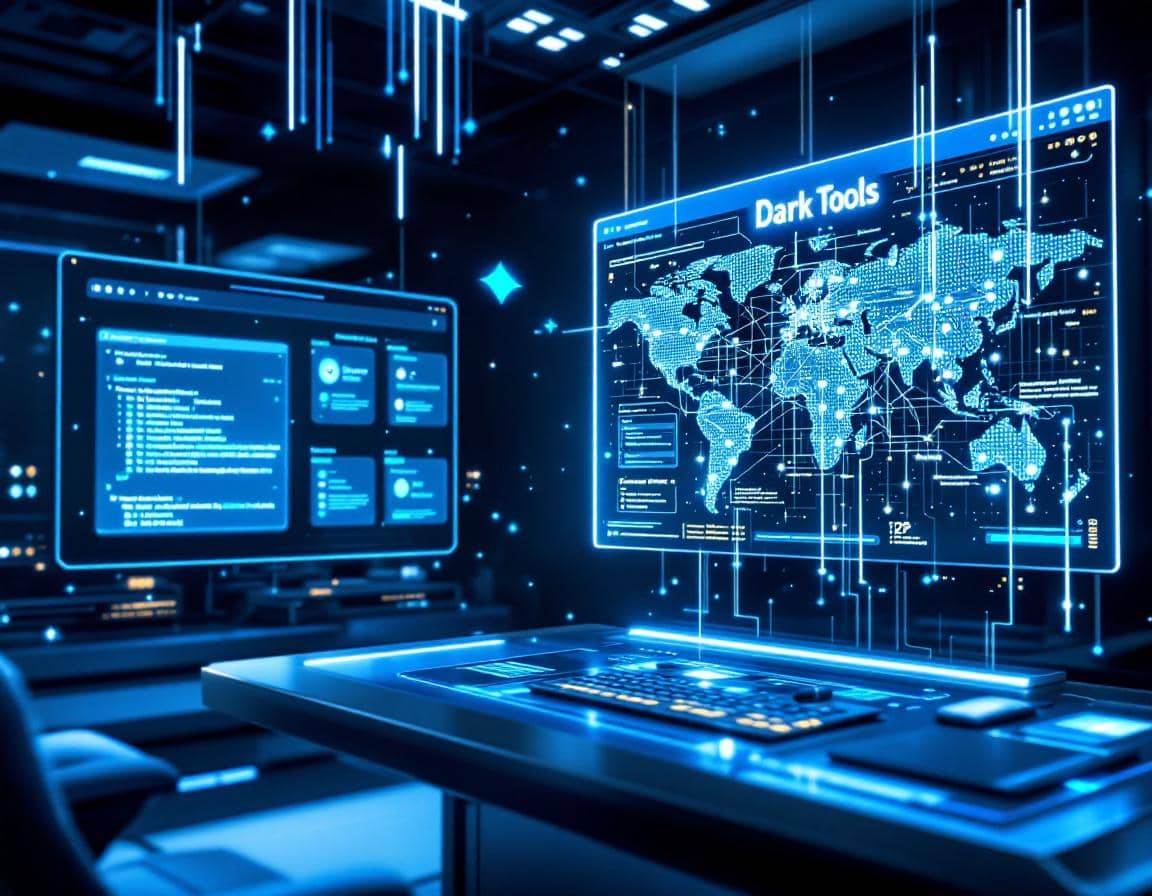
When developing a new product, doing some engineering or research, some Darknet tools can become very handy. But that needs to clarify the nature of the “darknet”: it is not a separate, shadowy internet, but an overlay network functioning on existing global infrastructure. Gaining entry to its hidden services, often recognized by “.onion” addresses, depends on specific software, such as the Tor Browser. This software acts as a gateway, directing network traffic through a series of encrypted relays to obscure a user’s origin and identity. This special design explains its reputation as a haven for illicit activities, as the same privacy that protects a dissident can also conceal a lawbreaker. Still, it is a mistake to equate the technology with its applications. The capacity for anonymous communication is a neutral and potent instrument whose ethical standing is defined by the user’s purpose. For every illegal market, a secure channel could exist for a journalist and a source, a human rights advocate organizing against oppression, or a corporate insider exposing misconduct.
Within the fields of science and engineering, this form of protected communication becomes a foundation for new discoveries and practices. The legitimate applications listed here are primarily defensive in character, including shielding intellectual property from theft during development, facilitating secure cooperation between global teams on sensitive projects like new medicines or aerospace systems, and allowing researchers to sidestep government censorship to obtain scientific reports and data.
From a practical view, the presented tools are not exclusively “darknet tools”, most are listed in Wikipedia and other trustful resources, and even some of them are owned by a state (the Swiss Post!); they are security and privacy solutions applicable to any digital undertaking. Their capacity to connect to the darknet is a single function stemming from their main design, which is to grant scientists and engineers greater command over their digital presence and the safety of their important work.
Disclaimer:
This page content is for adults only, understanding what they do and the potential consequences for them. If any of these is not your case, you must leave this page now (we have so much specific to product design).
The author of this information assumes no responsibility or liability for any actions taken by the reader. The tools and methods described are presented for informational purposes only. The legality of using encryption, anonymization networks like Tor, and other privacy-enhancing technologies changes greatly from one country to another. An activity that is perfectly legal in one jurisdiction could be a serious civil or criminal offense in another.
Before you download, install, or use any of the tools or sites mentioned below -whether for accessing the darknet or for any other purpose- it is your personal and professional obligation to ensure you are in full compliance with your local, national, and international laws, as well as any policies set forth by your employer or academic institution. If you have any doubt whatsoever about the legal or policy implications of using this technology, you must consult with an authorized company representative (such as from a legal or IT security department) or a qualified lawyer.
We use to say: “if there is a doubt, then there is no doubt” … in clear words: don’t!
Idea: if vital anonymity was needed towards a particular country, we would be particularly careful if the tool or service were made in that country or if its author is/was originated from there.
Tip: some of these tools are already a couple of years old. Sometimes for the better (reliability, patches, features …), sometimes not. This is just a start, stay up to date if you rely crucially on such tools and practices.
Warning: if you are working for a company, agency or any institution, not as an independent, you have policies for this (see conclusion).
Anonymous Browsing and Network Access
These tools allow users to browse the internet anonymously, which can be crucial for researchers and engineers dealing with sensitive information or facing censorship.

- The Tor browser: for engineers and scientists, the Tor Browser is an essential tool for conducting research on sensitive or proprietary technologies without leaving a digital trail that could be monitored by competitors or state actors. An aerospace engineer, for instance, could use Tor to research advanced composite materials or propulsion systems without alerting corporate or national surveillance systems to their company’s research direction. Similarly, a materials scientist studying a new, potentially controversial synthetic compound can gather data from international sources, including those on .onion sites, while protecting their identity and the nature of their work. Tor ensures that the intellectual process of exploration and discovery remains confidential.
- I2P (The Invisible Internet Project): I2P provides a robust, decentralized, and anonymous network layer that is ideal for engineers and scientists collaborating on long-term, high-stakes projects. Unlike the Tor network which is optimized for anonymous browsing of the public internet, I2P is a self-contained anonymous internet that is excellent for hosting and accessing hidden services (“eepsites”). A team of software engineers developing a revolutionary encryption algorithm could host their entire development environment—code repositories, internal wikis, and communication channels—within I2P. This creates a secure, isolated ecosystem where their work is shielded from industrial espionage and external surveillance, ensuring the integrity and confidentiality of their project from inception to completion.
- Freenet: Freenet operates as a decentralized, peer-to-peer platform for censorship-resistant publishing and data storage, making it a valuable asset for scientists and engineers who need to ensure the long-term availability of their work. A climatologist, for example, could publish a controversial dataset on climate change to Freenet, confident that it cannot be easily removed by political or corporate entities seeking to suppress the findings. Because the data is distributed and encrypted across the network’s nodes, it remains accessible to the global scientific community as long as the network exists. This makes Freenet a modern-day digital archive for vital scientific and engineering knowledge that might otherwise be lost to censorship or data degradation.
- Whonix:Whonix is a complete operating system designed for advanced security and privacy, which is highly beneficial for engineers and scientists handling extremely sensitive information. It consists of two virtual machines: one acts as a “Gateway” that routes all internet traffic through the Tor network, while the other, the “Workstation,” is completely isolated, with no direct connection to the internet. A nuclear engineer designing safety protocols for a power plant or...
You have read 24% of the article. The rest is for our community. Already a member? Log in
(and also to protect our original content from scraping bots)
Innovation.world community
Login or Register (100% free)
View the rest of this article and all members-only content and tools.
Only real engineers, manufacturers, designers, marketers professionals.
No bot, no hater, no spammer.





















There a risk (chance?) of these Darknet tools being misused for illegal activities?
Secure communication is great, but how can we ensure these darknet tools dare not fooling the users also or first ?
Related Posts
How to Sell Ice to Eskimos (aka Marketing Shenanigans)
Greenwashing: A Gentleman’s 15 Best Tips to Exquisite Deception
How-to Best Fight a Pending Patent
All Patent Status: PCT vs Pending Patent vs Published Patent vs Granted Patent
Best 10 Patent Invalidation Strategies and Tools
Life Cycle Assessment (LCA) In Product Design Specifically